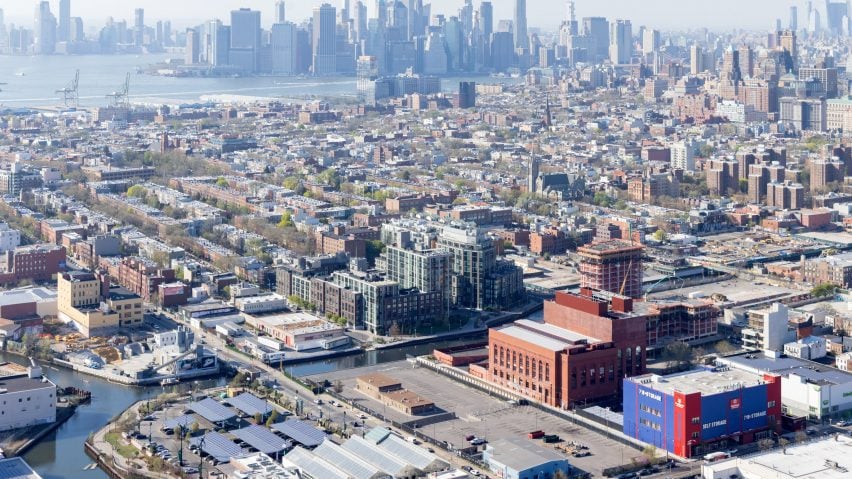
Herzog & de Meuron transforms derelict Brooklyn power plant into arts centre
Swiss architecture studio Herzog & de Meuron has completed the restoration and conversion of a power plant on a decontaminated industrial site along the Gowanus Canal in Brooklyn.
After an extensive decontamination project launched by the state government, Herzog & de Meuron was charged with converting the remains of a 115-year-old power plant into an art manufacturing hub, now called Powerhouse Arts. The studio worked with local PBDW Architects, which served as the executive and restoration architect on the project.
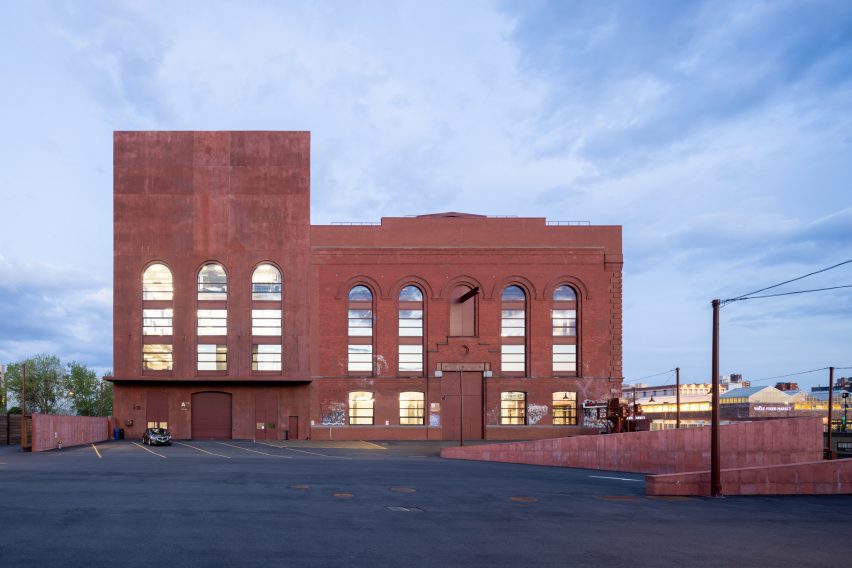
The studio took the shell of the one remaining structure on the site and converted it into a six-storey art production centre, keeping details from the original structure in order to respect the history of the site and its industrial landscape.
The power plant, which served the transit system, was decommissioned in the 1950s and later became a spot used by local graffiti artists.
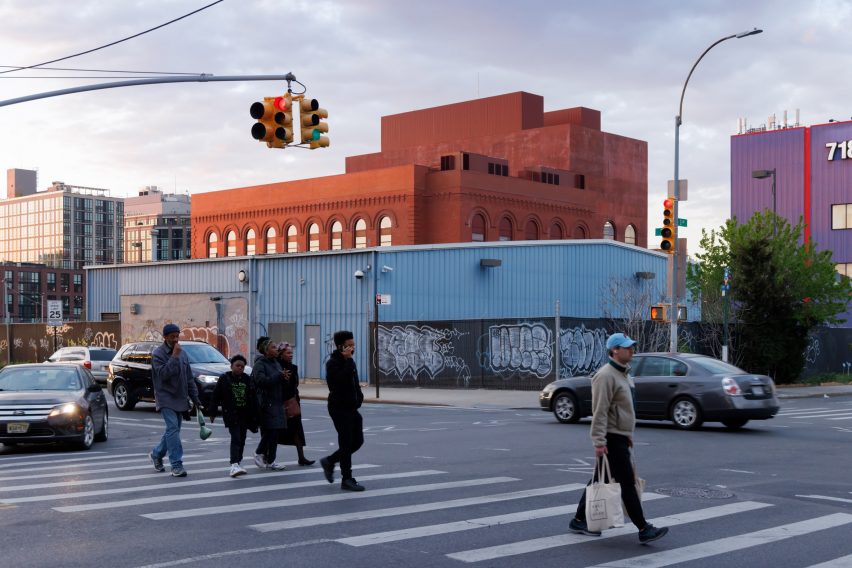
In 2010, the United States Environmental Protection Agency (EPA) launched an initiative to clean up the contaminated industrial site.
The project included the renovation of a brick-clad building called Turbine Hall and the reconstruction of the demolished Boiler House.

Herzog & de Meuron refurbished Turbine Hall and rebuilt Boiler House on the historic foundations.
The Turbine Hall facade kept its masonry and arched windows, typical of industrial buildings of the early 20th century, while Boiler House was given a treatment in red concrete to match the historic brick.
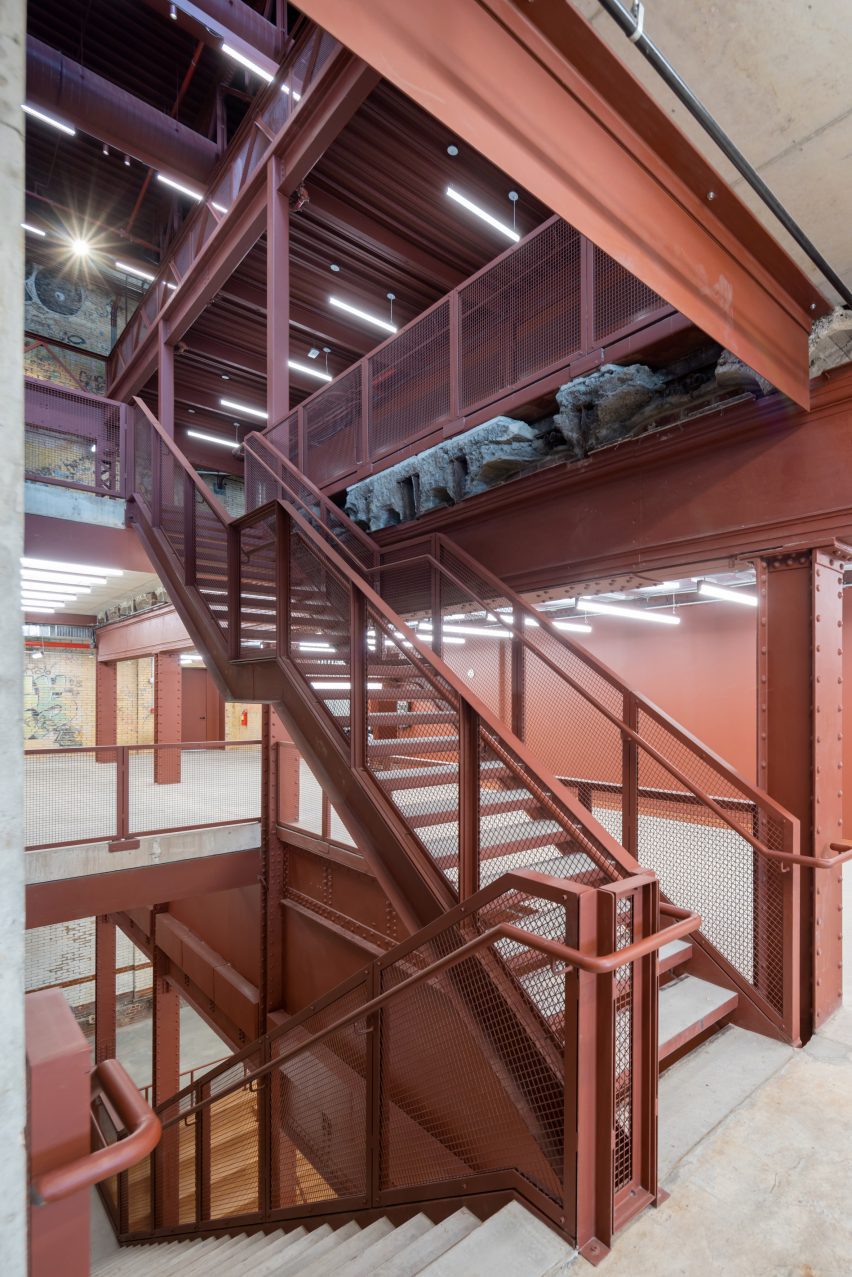
The rebuilt Boiler House was placed behind Turbine Hall and stands taller, making both structures visible from various angles. A vertical service wall connects the two buildings.
Most of the art workshops are stacked along this wall but located at different levels depending on their use.
For example, the wood and metal workshops are located nearer the ground floor, closer to the loading zones, while the ceramic and painting workshops are located higher up, closer to the exhaust outputs.
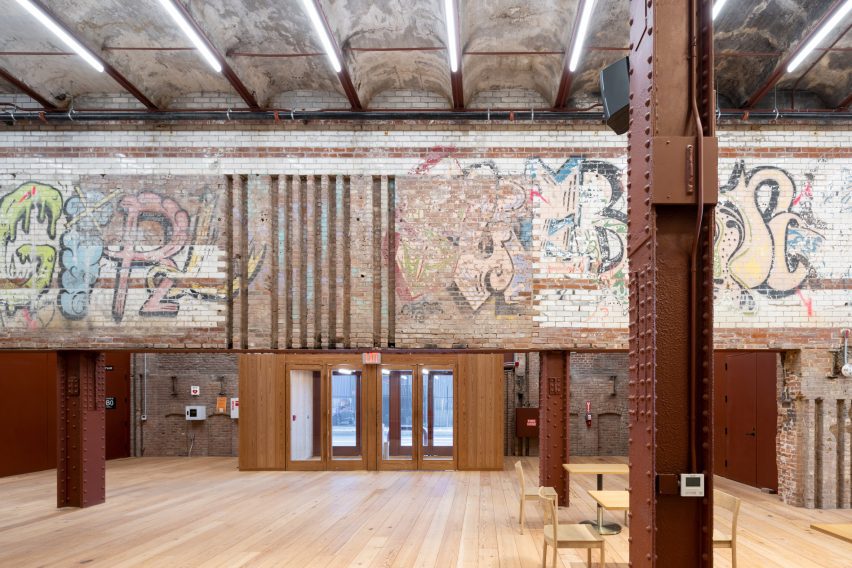
The mechanical systems and stairwells were also placed along this central plate.
"The consolidation of these vertical elements between the existing and the new building provides additional lateral, structural stability for both buildings and creates the flexibility required for workshop programming within the remainder of the Boiler House floor slab," said the studio.
"Two large bulkhead volumes at the roof express the primacy of the mechanical, electrical, plumbing, and fire protection systems in the project and recall the historic smokestacks of the original Boiler House building."
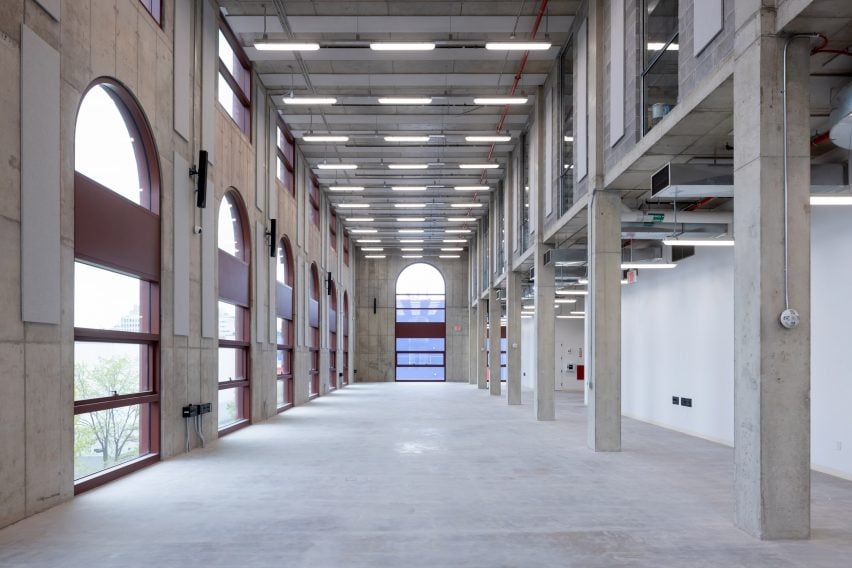
The floorplans for the Turbine Hall are wider and hold the largest single space within the building, the grand hall.
Located on the third story, the grand hall features details that illustrate the history of the building, including exposed refurbished steel trusses painted red and graffiti on the exposed brick walls.
The grand hall also has a painted-steel catwalk surrounding the space and is lit by a massive skylight.
The combination of refurbished steel and exposed brick walls layered with graffiti continues throughout the interiors of the restored structure.
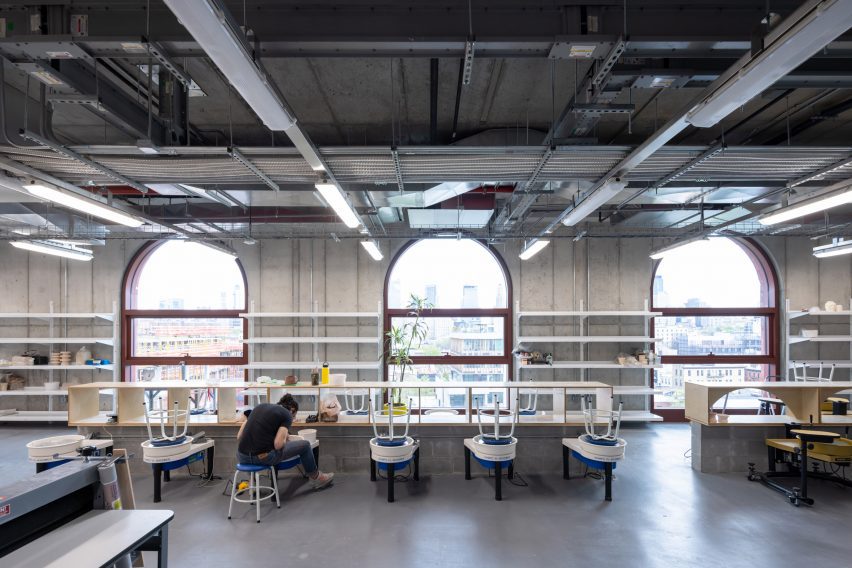
Adjacent to the grand hall is a smaller event space in the rebuilt structure. This space reflects the contemporary generation of the Boiler House, with stark white walls and exposed concrete beams.
Parking was included underneath the structure.
Herzog & de Meuron is working on a similar project in San Francisco, transforming an industrial site in the Dogpatch neighbourhood, and recently finished a building for the Royal College of Art in London.
The photography is by Iwan Baan.